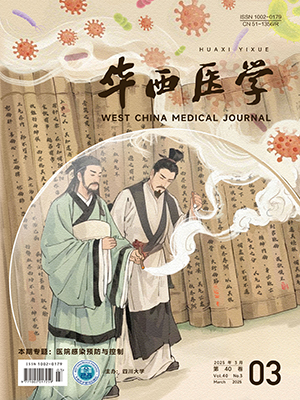| 1. |
邹小兵, 静进. 发育和行为儿科学[M]. 北京:人民卫生出版社, 2005:237.
|
| 2. |
李博, 李文才. 儿童多动症的成因分析及教育干预措施[J]. 广东教育学院学报, 2009, 29(4):20-23.
|
| 3. |
魏海涛. 小儿多动症临床治疗分析[J]. 中国医药科学, 2011, 1(20):157.
|
| 4. |
American Psychiatric Association. Diagnostic and statistical manual of mental disorder[M]. 4th ed. Washington DC:American Psychiatric Association, 1994:129-130.
|
| 5. |
任桂英, 王玉凤, 顾伯美, 等. 儿童感觉统合评定量表心测报告[J]. 中国心理卫生杂志, 1994, 8(4):145-147.
|
| 6. |
龚耀先, 蔡太生. 中国修订韦氏儿童智力量表[J]. 中国临床心理学杂志, 1994, 2(1):1-6.
|
| 7. |
潘学霞, 万彬, 麻宏伟, 等. 整合视听持续测试诊断不同年龄段注意缺陷多动障碍患儿的临床应用[J]. 实用儿科临床杂志, 2008, 23(12):908-910.
|
| 8. |
Dopheide JA, Pliszka SR. Attention-deficit-hyperactivity disorder:an update[J]. Pharmacotherapy, 2009, 29(6):656-679.
|
| 9. |
郝伟, 于欣. 精神病学[M]. 6版. 北京:人民卫生出版社, 2008:190.
|
| 10. |
Camila TF, Folquitto CL, Rodrigues, et al. Considerations about psychological development of children with ADHD (attention deficit hyperactivity disorder)[J]. Psychol Res, 2014, 4(3):168-177.
|
| 11. |
卜茹, 周宏辉, 孙金荣, 等. 两种哌甲酯治疗多动障碍临床对照研究[J]. 临床精神医学杂志, 2008, 18(6):381-383.
|
| 12. |
May DE, Kratochvil CJ. Attention-deficit hyperactivity disorder:recent advances in paediatric pharmacotherapy[J]. Drugs, 2010, 70(1):15-40.
|
| 13. |
尹显贵, 孙巍, 尹葛子煦. 儿童注意缺陷多动障碍研究进展[J]. 吉林医学, 2013, 34(31):6555-6557.
|
| 14. |
陈敏榕, 薛漳, 黄林娟, 等. 注意缺陷多动障碍儿童就医行为及药物治疗影响因素[J]. 中国儿童保健杂志, 2014, 22(3):315-318.
|
| 15. |
陈光福, 崔艳丽, 陈美清. 盐酸哌甲酯控释剂治疗儿童注意缺陷多动障碍的疗效[J]. 实用儿科临床杂志, 2011, 26(6):452-454.
|
| 16. |
Kaplan A, Adesman A. Diagnosis and management of pre-school ADHD[J]. Curr Opin Pediatr, 2011, 3(6):684-700.
|




